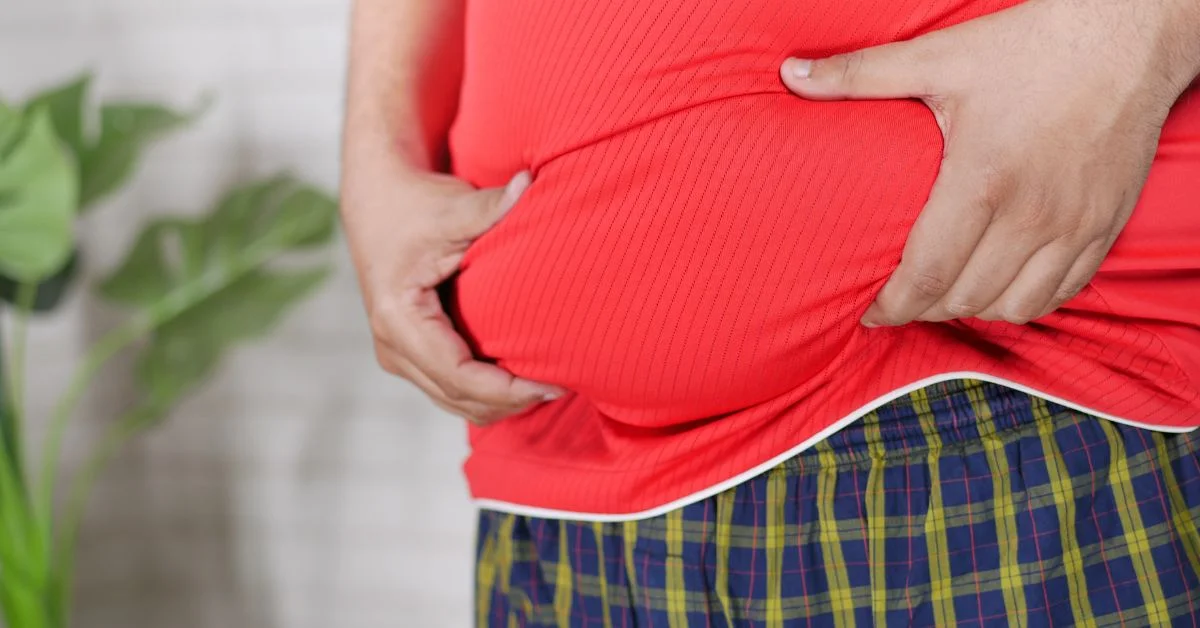For many people, the physical and emotional weight of an apron belly—also known medically as a pannus—goes beyond aesthetics. This fold of skin and fat that hangs over the lower abdomen can result from rapid weight gain, pregnancy, obesity, or significant weight loss. While the internet is full of transformation photos, few resources explain the full context: what changes are possible, how they’re achieved, and what outcomes are realistic over time.
This article is designed to answer those questions, using the framework of “before and after” not just visually, but as a lens through which to understand physical change, body acceptance, and medical options. With a focus on accuracy and empathy, we’ll break down the causes of apron belly, explore treatment methods (surgical and non-surgical), examine long-term expectations, and discuss the emotional realities that accompany physical change.
What Is an Apron Belly?
An apron belly, also known as a panniculus or pannus, is an overhanging flap of abdominal skin and fat that drapes down from the lower abdomen. It can range from a small fold that covers the waistband to a large flap that hangs to the thighs or even knees.
This condition is not just cosmetic. An apron belly can lead to:
- Chafing and irritation
- Skin infections (intertrigo)
- Restricted movement
- Lower back pain
- Psychological distress or body image issues
The Anatomy Behind It
Understanding what’s going on beneath the skin is key to understanding both treatment options and expectations for improvement.
An apron belly involves a combination of:
- Excess subcutaneous fat
- Stretched abdominal skin
- Weakened or separated abdominal muscles (common after pregnancy)
This structure is different from simply carrying belly fat. An apron belly has weight, mobility, and often causes downward pressure that can impact posture, balance, and internal organs.
Common Causes of Apron Belly
1. Pregnancy
Pregnancy stretches the abdominal wall. In some cases, the skin and muscles don’t fully rebound, especially after multiple pregnancies or cesarean deliveries.
2. Rapid or Major Weight Loss
Losing a large amount of weight—through diet, exercise, or bariatric surgery—can result in excess skin. This is common in post-obesity patients.
3. Genetic Predisposition
Some people are more prone to storing fat in the lower abdomen, and their skin may have less elasticity due to genetics or age.
4. Obesity
Excess abdominal fat over time stretches the skin and muscles, which can lead to a pronounced pannus.
Before and After: What the Pictures Actually Show
When people search for “apron belly before and after pictures,” they are often looking for evidence—proof that change is possible. These images serve several functions:
- Inspire those considering weight loss or surgery
- Help set realistic expectations
- Reveal the different “stages” of change
Let’s explore the meaning behind these images:
1. Weight Loss Transformations
Before: Protruding belly, skin folds, potential rashes or redness from friction
After: Smaller midsection, but often with loose, hanging skin
Weight loss alone often does not eliminate the apron belly. It reduces fat volume, but skin retraction varies by age, genetics, and time.
2. Postpartum Recovery
Before: Swollen abdomen, loose skin, stretch marks, separated muscles
After: Improved tone with exercise, possibly surgical tightening (like tummy tuck)
For many women, the “after” picture is not just about flatness but about function—reduced pain, better posture, and improved core strength.
3. Post-Surgery (Panniculectomy or Abdominoplasty)
Before: Large overhang that causes hygiene issues
After: Flat or taut lower abdomen with surgical scars
Surgical transformation shows the most dramatic difference. These photos often include scars, but also demonstrate improvement in quality of life.
Treatments That Create the “After” You See in Photos
There’s no one-size-fits-all solution. Each person’s journey depends on the extent of their apron belly, overall health, and personal goals.
1. Weight Loss (Non-Surgical)
- Diet and exercise can reduce fat but not excess skin
- Important first step for those who qualify for surgery later
2. Strength Training and Core Rehabilitation
- Especially useful after pregnancy
- Rebuilds strength in abdominal muscles and improves posture
- May reduce the appearance of overhang
3. Panniculectomy (Skin Removal Surgery)
- Medical procedure that removes the pannus
- Often covered by insurance if causing health problems
- Does not include muscle repair or aesthetic sculpting
4. Abdominoplasty (Tummy Tuck)
- Cosmetic procedure that tightens muscles and removes skin
- Includes repositioning of the belly button
- Not typically covered by insurance
5. Liposuction
- Removes fat but does not address skin laxity
- May be combined with abdominoplasty for contouring
6. Non-Invasive Treatments
- Radiofrequency and ultrasound devices (e.g., Thermage, Ultherapy)
- May slightly tighten skin but cannot remove large overhangs
- Best for mild cases or as maintenance
Emotional and Psychological Aspects
Before-and-after pictures often show physical transformation—but the emotional arc is less visible. Living with an apron belly can affect:
- Self-esteem
- Intimacy
- Social confidence
- Daily comfort (choosing clothes, traveling, exercising)
After treatment, patients often report:
- Greater freedom of movement
- Relief from chronic discomfort
- Renewed motivation for physical health
- Confidence in social and professional settings
But it’s also important to prepare for:
- Body dysmorphia post-weight loss
- Adjustment to scars after surgery
- Ongoing body image work, especially in long-term maintenance
What to Consider Before Pursuing Change
Medical Considerations
- Do you have underlying conditions (e.g., diabetes, heart issues)?
- Is your weight stable?
- Are infections or skin rashes recurrent under the fold?
Financial Planning
- Cosmetic surgery can range from $6,000 to $15,000
- Insurance may only cover panniculectomy—not full tummy tucks
Emotional Readiness
- Are you making this decision for yourself?
- Have you spoken with a therapist if body image is a concern?
- Are your expectations realistic?
Recovery Time
- Surgical recovery ranges from 2–6 weeks
- You’ll need help with mobility and daily tasks
- Exercise may be restricted for several months
Realistic Expectations: What “After” Doesn’t Always Mean
Not all apron bellies will disappear entirely. Even after surgery or weight loss, some looseness, scarring, or asymmetry may remain.
“After” may mean:
- No more rashes or daily discomfort
- Improved self-confidence
- Clothes that fit better
- Greater ability to move freely
But it may not mean:
- Perfectly flat abs
- Zero visible scars
- Instant happiness or self-acceptance
Who Qualifies for Surgical Removal?
You may be a candidate for panniculectomy if:
- The apron belly interferes with daily life or hygiene
- You’ve had stable weight for 6+ months
- You’re in good general health and don’t smoke
- You’ve documented issues such as infections or ulcers
A tummy tuck is an option if you’re seeking a cosmetic change, often after:
- Pregnancy
- Massive weight loss
- Abdominal hernia repair
Scars: The Unspoken “After”
Every surgical “after” comes with a scar. Common locations include:
- Horizontal scars from hip to hip (low enough to hide in underwear)
- Vertical scars (less common, more visible)
- Around the belly button
Scar healing depends on:
- Skin tone
- Genetics
- Surgeon skill
- Post-operative care
For many, the trade-off between function and aesthetics is worth it.
Tips for Taking Your Own Before and After Photos
If you’re documenting your own transformation:
- Use consistent lighting and pose
- Take photos from front, side, and angled views
- Wear the same clothing in each shot
- Avoid filters; keep it authentic
- Take monthly, not daily photos to track real progress
This practice can be deeply motivating—if you focus on progress, not perfection.
Conclusion
“Apron belly before and after pictures” may initially seem like a cosmetic curiosity—but they reflect something more profound: the human story of transformation. Whether that change comes through surgery, weight loss, core rebuilding, or self-acceptance, these photos document far more than the physical. They represent resilience, discomfort, decision-making, and eventually, hope.
For some, the “after” is flat and sculpted. For others, it’s simply the relief of movement without pain. The goal isn’t to fit one standard of beauty but to reclaim comfort and agency in your body—whatever that looks like for you.
When armed with knowledge, realistic expectations, and compassionate care, you can move forward with clarity and courage, knowing that every “before” has the potential for meaningful change.
FAQs
1. What causes an apron belly after weight loss?
An apron belly often results from significant fat loss that leaves behind excess skin, especially when weight loss happens rapidly.
2. Will exercise alone remove an apron belly?
Exercise can help reduce fat and build core strength, but it won’t eliminate excess skin. Surgery may be needed for full removal.
3. Is panniculectomy covered by insurance?
Yes, if the pannus causes documented health issues like infections or limited mobility. Cosmetic abdominoplasty is usually not covered.
4. How long is recovery from apron belly surgery?
Recovery typically takes 2 to 6 weeks. Full results may take several months as swelling decreases and scars mature.
5. Are there non-surgical options for tightening an apron belly?
Mild cases may improve with radiofrequency or ultrasound treatments, but large overhangs usually require surgical intervention for noticeable change.
For more information, click here.









